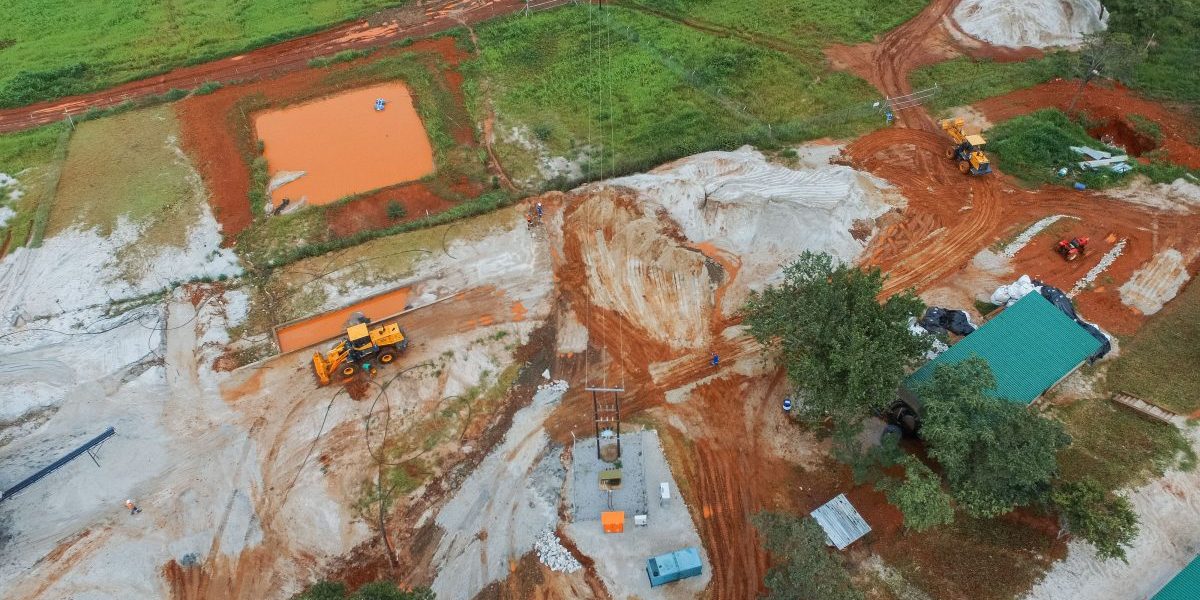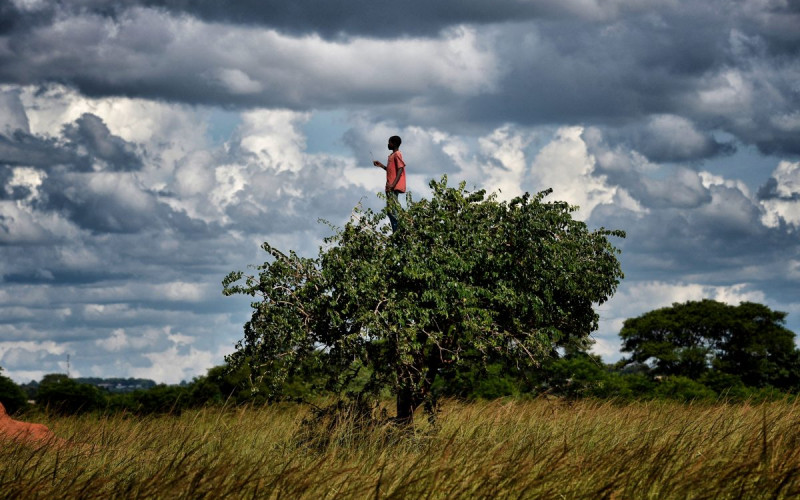Recommendations
- The African Minerals Development Centre (AMDC), working with the UN Industrial Development Organisation, should develop a new continental and regional resource management system to enable a resource balanced economy.
- SADC member states’ finance and mining departments should rethink financial innovations that will improve access to global markets and change outdated rules and thinking about financial markets to level the playing field towards long-term fair trade.
- The AMDC working with the SADC Business Council and the Mining Industry Association of Southern Africa should broaden new mining frontiers by prioritising bioregionalism in regional value chains development.
- The AMDC working with the UN Development Programme should create a new social contract that will build anticipatory governance for enhanced dialogue and cooperation on the future of critical minerals in SADC.
Executive summary
The surge in demand for critical minerals presents opportunities for mining jurisdictions. Appropriate systemic innovations, policies and governance measures are needed to prevent negative environmental and social impacts and capture a greater share of the economic value generated by these minerals. Southern African countries, as key producers of minerals like cobalt, graphite, lithium and others, can benefit from rising demand. However, they face challenges such as low industrialisation, regional fragmentation and social inequality. Anticipatory governance, which embraces complexity and uncertainty, can help explore these challenges by facilitating future scenario planning, to support policies and a strategy roadmap to achieve sustainable resource management, and technological innovation.
By adopting anticipatory governance, Southern Africa can make more informed decisions, promote sustainable development and ensure long-term socio-economic equality in the critical minerals sector. Transitioning to a Resource Balanced Economy (RBE) that optimises resource flow and considers energy constraints is crucial. Rethinking financial innovations, such as diversifying currencies, transitioning to commodity-backed finance systems and adopting stable digital currencies, can enable fair trade and reduce the risk of financial capture. Additionally, establishing a specialised financial market for critical minerals and evaluating countries based on broader valuation measures can attract investment and support sustainable practices by creating a new social contract among SADC member states.
Introduction
The World Bank projects a potential rise of almost 500% in the extraction of minerals and metals like graphite, lithium and cobalt by 2050.1World Bank, Minerals for Climate Action: The Mineral Intensity of the Clean Energy Transition, (Washington DC: WB, 2020), https://pubdocs.worldbank.org/en/961711588875536384/Minerals-for-Climate-Action-The-Mineral-Intensity-of-the-Clean-EnergyTransition.pdf. This surge is expected to be driven by the expansion of technologies for generating and storing low-carbon energy. The surge in demand for these green minerals (also referred to as ‘low carbon’, ‘green’ or ‘transition’ minerals) provides new opportunities for mining jurisdictions in which they occur. Yet, in the absence of appropriate policy and governance measures, mining jurisdictions could remain restricted as raw mineral suppliers for green technology value chains, with most of the value captured in major manufacturing centres elsewhere. Enhanced governance is also required to ensure that the expansion of mining activities for these green minerals does not lead to pollution, habitat destruction, corruption, illicit financial flows and other deleterious environmental and social impacts. This would undermine the potential contribution of the mining sector to the sustainable and inclusive development of mineral-rich economies.
For most countries in Southern Africa, mining contributes a significant part of employment, foreign exchange earnings, and GDP. However, as mines become more mechanised and digitised to improve productivity, the human resources needed will decline without a new social contract that includes alternative education and training policies. This trend is particularly problematic for many African countries who depend on the mining sector for significant employment generation. The demand, use, and trade landscape of these commodities is therefore an important economic driver of these economies. Approximately 70% of the globe’s cobalt, which is vital for batteries in applications ranging from mobile phones to electric vehicles, originates from the Democratic Republic of Congo.2Ahmad Mayyas et al., ‘Can Circular Economy and Cathode Chemistry Evolution Stabilize the Supply Chain of Li-Ion Batteries?’, The Extractive Industries and Society 14 (June 2023), https://doi.org/10.1016/j.exis.2023.101253 A noteworthy portion is also sourced from Madagascar. Additionally, Zimbabwe and Namibia possess some of the most substantial lithium deposits worldwide. Given their significant roles as primary global suppliers of these resources, economies in Southern Africa are favourably poised to capitalise on the increasing need for environmentally-friendly minerals.
At present, however, the region faces low levels of industrialisation, high commodity dependence, regional fragmentation and high levels of social inequality. The shift in the landscape of minerals and metals, prompted by the worldwide push for decarbonisation, offers a distinct chance for countries in Southern Africa to initiate a fundamental change away from a developmental approach centred on extraction. Instead, they can embrace a model where mineral resources are used to expedite comprehensive regional development, fostering resilient, diversified and well-balanced economies.
This policy briefing provides a forward-looking and futures-informed critical exploration of the critical minerals ecosystems in SADC, with specific focus on offering more complete alternatives for the long-term flourishing of critical minerals. The urgency to build anticipatory governance is highlighted due to the need for a proactive – rather than reactive – approach to decision-making and policy development. This would address future challenges and uncertainties in advance, while experimenting with safe-to-fail alternatives practices. The bulk of the policy briefing unpacks the lessons learnt from taking a futures thinking approach to prioritise important systemic changes to create more bold, hopeful and equitable SADC futures of critical minerals.
Navigating the Critical Minerals Ecosystem in SADC
Society’s annual consumption of mineral resources continues to increase, but there is a lack of awareness regarding our dependence on minerals for the functioning of various sectors. Although the recycling industry is gaining momentum mainly in the North, it is still in its early stages and cannot single-handedly facilitate the transformation of the industrial ecosystem. Consequently, in addition to a well-established recycling infrastructure, there will be a requirement for mineral mining on an unparalleled level to establish an industrial system after the fossil fuel era.
The availability of critical minerals may become an issue due to the increasing cost of extracting metals from declining grade, further increasing production costs. Moreover, the discovery of new deposits is diminishing. The mining industry relies heavily on fossil fuel-based energy and the viability of this energy supply ecosystem has progressively experienced supply chain and geopolitical challenges over the past five to ten years.3N J Hagens, ‘Economics for the Future – Beyond the Superorganism’, Ecological Economics 169 (March 2020): 106520, https://doi.org/10.1016/j.ecolecon.2019.106520. Consequently, the mining operations required to meet future metal demands are unlikely to proceed as planned and increase biodiversity loss.4Laura J Sonter, MC Dade, JEM Watson, ‘Renewable Energy Production Will Exacerbate Mining Threats to Biodiversity’, Nature Communications 11, no. 1 (September 2020), https://doi.org/10.1038/s41467-020-17928-5.
The industrial environment is undergoing a shift from a perspective of boundless expansion to one defined by limitations and defined parameters. Until a novel system – blending industry, technology, economics and nature – is devised to align with these fresh demands, this interim phase of transformation could be characterised as a contraction-centred economic model influencing all aspects of the worldwide ecosystem within a span of two decades.
The current industrial business model mindset operates under the assumption that there are no limits to raw material supply, leading to an ever-increasing demand for minerals. Technological advancements have also raised the requirements for material purity, driving up production costs and reducing profitability. An alternative industrial paradigm, represented by a resource balanced economy,5Simon P Michaux, ‘The Resource Balanced Economy to Meet the Twin Challenges of Phasing out Fossil Fuel Energy and SelfSufficient Supply of Raw Materials’, (BSR Policy Briefing 2/2023, Turku: Centrum Balticum Foundation, February 2023), https://www.centrumbalticum.org/en/publications/databank/databank/bsr_policy_briefing_2_2023.6958.news. is required.
Up to this point, market dynamics and economic factors have successfully upheld production levels to satisfy consumer needs. Nevertheless, the gains from these endeavours have been directed towards multinational corporations, leading to impoverishment within local communities. Meanwhile, governments have not effectively employed these earnings to enhance the well-being of their populace. However, the decreasing quality and size of raw materials (such as oil, gas, and coal) are posing challenges.6Simon P Michaux, ‘Restructuring the Circular Economy into the Resource Balanced Economy’ (Espoo, Finland: GTK, Report Serial 3/2021, 2021), https://tupa.gtk.fi/raportti/arkisto/3_2021.pdf. This decreasing grade, which was previously not seen as problematic, becomes more pressing as energy resources become more expensive.7Simon P Michaux, ‘The Mining of Minerals and the Limits to Growth’ (Espoo, Finland: GTK Geological Survey of Finland, 2021), https://tupa.gtk.fi/raportti/arkisto/16_2021.pdf. The significance of energy supply in the African mining context has not been fully appreciated.
Another concerning trend is the degradation of the environment. Industrial pollution has impacted various subsystems, including the hydrosphere, biosphere, atmosphere and geosphere.8Johan Rockström et al., ‘Planetary Boundaries: Exploring the Safe Operating Space for Humanity’, Ecology and Society 14 no. 2 (2009). Natural living systems worldwide have significantly reduced in size and complexity due to industrial agriculture, urbanisation and other industrial activities.9Carl Folke et al., ‘Social-Ecological Resilience and Biosphere-Based Sustainability Science’, Ecology and Society 21, no. 3 (2016): 41. https://doi.org/10.5751/ES-08748-210341. Overloaded biogeochemical cycles, particularly nitrogen and phosphorus from industrial agriculture, further strain the global environment.10Brian G Katz, Nitrogen Overload: Environmental Degradation, Ramifications, and Economic Costs (John Wiley & Sons, 2020). These impacts have been absorbed by the environment without fully understanding the implications within the development of the global industrial ecosystem. The production of food for the global population will likely be a flashpoint to act for this trend.11Amanda Wood et al., ‘Reframing the Local–Global Food Systems Debate through a Resilience Lens’, Nature Food 4, no. 1 (January 2023): 22–29, https://doi.org/10.1038/s43016-022-00662-0.
If the ‘Limits to Growth’ investigation provides a reliable framework for anticipating the industrial environment, then the present industrial methods are unsuitable towards building a sustainable future. Persisting with the approach of pursuing economic expansion would progressively demonstrate inefficacy and lead to wasteful depletion of precious resources when applied to certain contexts. Such endeavours would hinder progress or exacerbate crises, especially if immediate financial gains from critical minerals were realised without tackling the socio-economic and environmental problems inherited from the past.
Another paradigm shift to consider is to move away from trade-offs between economic prosperity and environmental impacts. According to the World Bank, by 2035 more than half of the global youth population will be in Southern Africa.12World Bank, ‘Realizing a Brighter Future for a Young, Energized, and Connected Africa’, (World Bank, 14 August 2023), https://www.worldbank.org/en/news/feature/2023/08/14/realizing-a-brighter-future-for-a-young-energized-and-connected-africa. This will place unprecedented pressure to expand investments and opportunities to affected sectors across the region. SADC member states are urged to implement policies to anticipate and respond to social, political and economic future needs considering the knock-on impacts of the demographic cycle.
Building Anticipatory Governance for the SADC Critical Materials Ecosystem
Anticipatory governance can play a crucial role in addressing the high impact key uncertainties, challenges and opportunities for the future of critical minerals in Southern Africa, by providing a proactive and forward-looking approach. Complexity has emerged as a fundamental characteristic of the worldwide industrial system amidst the global polycrisis.13A global polycrisis occurs when crises in multiple global systems become causally entangled in ways that significantly degrade humanity’s prospects. These interacting crises produce harms greater than the sum of those the crises would produce in isolation. Michael Lawrence, Scott Janzwood and Thomas Homer-Dixon, ‘What Is a Global Polycrisis? And How Is It Different from a Systemic Risk?’ (Discussion Paper #2022-4, Cascade Institute, Victoria, 2022), https://cascadeinstitute.org/wp-content/uploads/2022/04/What-is-a-global-polycrisis-v2.pdf. Traditional linear thinking often falls short when dealing with complex problems because it assumes that cause and effect relationships are straightforward and predictable. From a systems thinking perspective single root causes cannot be identified and solved with simple fixes. However, in complex adaptive systems, cause and effect relationships are often nonlinear and small changes in one part of the system can have significant cascading consequences with and unexpected effects elsewhere. There are no easy fixes in complex systems. The global industrial system – in the context of the polycrisis – should be understood as a complex adaptive system in the domain of the volatile, uncertain, complex and ambiguous world.
By adopting a complex systems thinking approach that views critical minerals as complex adaptive systems,14Complex adaptive systems thinking offers a way of ‘interconnected’ thinking about the world that allows us to see the dynamic behaviour and patterns of change that such systems display; R Preiser, ‘Key Features of Complex Adaptive Systems and Practical Implications for Guiding Action’, (CST Policy Briefing Stellenbosch University: Centre for Sutainability Transitions, Stellenbosch, 2018), http://www0.sun.ac.za/cst/publication/key-features-of-complex-adaptive-systems-and-practical-implications-for-guiding-action/ decision-makers can accept that there are many unknowns that are interconnected. They can also understand the significance of how actions and outcomes influence each other. This way of thinking helps us see problems in a broader context and consider the unintended effects they may have, to develop strategies that can better respond to change and uncertainty and to also open pathways for systemic change and transformation.
Anticipatory governance is a complex adaptive systems and futures thinking approach for enabling governance to cope with accelerating, complex forms of change.15Leon S Fuerth and Evan M Faber, Anticipatory Governance Practical Upgrades: Equipping the Executive Branch to Cope with Increasing Speed and Complexity of Major Challenges (National Defense University, 2012), https://forwardengagement.org/. Center for Technology & National Security Policy, 2012 It includes institutional or industry knowledge, participatory futures and building adaptive organisational capacity. This proactive approach to decision-making and policy development aims to address future challenges and uncertainties by identifying and analysing potential risks, opportunities and alternative scenarios in advance. Anticipatory governance needs to also be inclusive of different forms of knowledge and experience to capture diverse perspectives and a systemic view of complex problems. It involves engaging diverse stakeholders (including those with industry knowledge), considering long-term consequences and implementing adaptive strategies that consider adaptive organisational capacity for change, to
- shape desirable futures by exploring methods for collective intelligence gathering networks;
- design reflexive feedback approaches to navigate diverse uncertain futures;
- illuminate the various political implications to respond to events in the present at earlier rather than later stages of development;
- experimenting with new innovative ideas and rapidly iterate based on learning from challenges and failures to move innovation prototypes forward; and
- develop ready-made multiple safe-to-fail options of speculative future imaginaries that enables a process of feedback for learning.16Kyungmoo Heo and Yongseok Seo, ‘Anticipatory Governance for Newcomers: Lessons Learned from the UK, the Netherlands, Finland, and Korea’, European Journal of Futures Research 9, no. 1 (July 2021): 9, https://doi.org/10.1186/s40309-021-00179-y.
By adopting anticipatory governance, the critical minerals ecosystem in Southern Africa can reap several benefits, including:
- Enhanced Decision-Making: Anticipatory governance uses exploratory foresight scenarios to understand plausibility based on trends and emerging issues, to identify strategic directions needed. This enables policymakers and stakeholders to identify potential challenges, opportunities and uncertainties in the critical minerals sector. By considering various scenarios and identifying common themes, decision-makers can develop robust strategies that are adaptable to different outcomes.
- Sustainable Resource Management: Anticipatory governance places a strong emphasis on sustainable resource management practices. It involves assessing critical mineral reserves, promoting responsible extraction techniques and maximising resource efficiency. By taking a long-term perspective and considering environmental, social and economic impacts, anticipatory governance helps mitigate negative consequences and promotes sustainable development in the sector.
- Technological Innovation and Skills Development: Anticipatory governance encourages investment in research and experimentation to drive anticipatory innovations for workforce skills development for transitions in the critical minerals industry. This includes exploring alternative extraction methods, improving processing techniques, and promoting mineral recycling and reuse. By focusing on advancements in experimentation, anticipatory governance addresses challenges related to resource scarcity, energy efficiency and environmental impacts, fostering a more sustainable and resilient sector.
By embracing these principles, the region can navigate uncertainties, mitigate risks and seize opportunities in the critical minerals sector, ensuring long-term sustainability and socio-economic development that expand the opportunities for the future workforce.
Lessons From the Future: Priorities for Critical Minerals in SADC
Creating a new social contract for critical minerals in SADC
The mining sector in Southern Africa is undoubtedly an economic cornerstone, contributing an average of approximately 10% of national GDP. However, it has been lacklustre in its ability to ensure broad-based development and the delivery of socio-economic benefits to communities. Despite the dedicated policies to govern and manage critical minerals, corruption remains astronomical. Additionally, advancing conducive mineral development in the region requires developing not only the technology and institutional capabilities, but also the people required to improve and maintain supply chain resilience.17Rim Berahab, “The Energy Transition Amidst Global Uncertainties: A Focus on Critical Minerals” (Policy Brief PB-37/22, Policy Center for the New South, 2022), https://www.policycenter.ma/sites/default/files/2022-05/PB_37-22_Berrahab.pdf.
Given these circumstances – along with the growing climate emergency and cost-ofliving crisis globally – a new social contract is required which reflects the changing way we are interacting with energy, mineral resources, technology, economics, the environment and with one another. Notably, this social contract will outline a more equitable and balanced social agreement (ie, encouraging ecologies of mutual care and strengthen cultural immune systems).18Simon P Michaux, ‘Restructuring the Circular Economy.’ This will promote the environmentally and socially responsible management and stewardship of mineral resources, to achieve better and more inclusive outcomes for the future if key stakeholders drive participatory futures of mining initiatives.
Developing a Resource Balanced Economy in SADC
To transition away from fossil fuels, a substantial volume of minerals – particularly those used in batteries – will be required. The demand for these minerals will spike globally, increasing their value. The existing approach to resource extraction has served a small minority well for the past 200 years, but is exhibiting signs of strain as the underlying belief in unlimited resources and exponential growth is being challenged. A new approach to resource extraction is required to keep pace with increasing demand for critical minerals. This necessitates a transformation of the current, inherited economic system dominated by energy and minerals blindness,19NJ Hagens and DJ White, Reality Blind: Integrating the Systems Science Underpinning Our Collective Futures, 1 (Red Wing, Minnesota: Amazon, 2021), https://read.realityblind.world/view/975731937/ii/; Simon P Michaux, “Minerals and Materials Blindness,” The Great Simplification #19, YouTube Video, May 18 2022, https://www.youtube.com/watch?v=O0pt3ioQuNc. which refers to a lack of awareness or understanding of the central role of both energy and minerals in shaping our societies and its interconnectedness with ecological and economic systems.
While the Circular Economy (CE) is a good starting point to address the complex challenges of the traditional, linear economy, there is evidence to suggest that it is not wholly a sustainable replacement.20World Economy Forum, ‘What Is the Circular Economy, and Why Does It Matter That It’s Shrinking?’ 14 June 14, 2022, https://www.weforum.org/agenda/2022/06/what-is-the-circular-economy/. Often, CE models fail to consider the energy cost associated with resource extraction and recycling which becomes more challenging as energy becomes more expensive.21Deon Cloete et al., ‘SADC Futures of Critical Minerals: Building Anticipatory Governance’, Special Report (Johannesburg: South African Institute of International Affairs (SAIIA), August 2023).; Michaux, ‘Restructuring the Circular Economy.’ Additionally, CE typically does not allow for economic or population growth and relies on the model of production and consumption that extends the life cycle of products to reduce waste to create further value while there are, however, some suggestions on building the CE for rare-earth elements.22Yong Geng, Joseph Sarkis and Raimund Bleischwitz, ‘How to Build a Circular Economy for Rare-Earth Elements’, Nature 619, no. 7969 (July 2023): 248–51, https://doi.org/10.1038/d41586-023-02153-z.
Instead, a Resource Balanced Economy (RBE) is proposed as an evolution of CE, which considers the embedded energy requirements of resource management and optimises resource flow based on technological applications and societal demands. This new addition to resource economics proposes a change in the rules and design to re-organise the industrial mining complex and its systems structure. The RBE paradigm focuses on achieving long-term resource sustainability by maximising the efficient use of each resource while considering logistical energy constraints.
Notably, the RBE’s architecture incorporates six key components23Michaux, ‘The Resource Balanced Economy’. that can be developed as structural elements of the economic system:
- resource accounting;
- management of dynamic equilibrium;
- strategic design,
- statistical entropy and material flow analysis for each resource;
- biophysical signatures; and
- evolution/devolution of technology applications over time.
To implement these concepts, industrial ecology principles such as thermodynamics, exergy 24Exergy is defined as the amount of work a system can perform when it is brought into thermodynamic equilibrium with its environment. It refers to the usable or available energy within a system to perform useful work. Unlike total energy, exergy focuses on the energy that can actually be harnessed. and biomimicry are suggested, utilising systems network theory.25Cloete et al., ‘SADC Futures of Critical Minerals: Building Anticipatory Governance’. Uncertainty can be addressed through the use of futures thinking26Futures thinking is a strategic approach to explore and consider future scenarios to define the most preferable ones for people and society, to provide policy-makers and decision-makers with the capacity to proactively anticipate changes, recognise opportunities and ease the transition toward desirable futures. Marita Canina, Carmen Bruno and Eva Monestier, ‘Futures Thinking’, in The Palgrave Encyclopedia of the Possible (Cham: Springer International Publishing, 2020), 1–7, https://doi.org/10.1007/978-3-319-98390-5_272-1.a or complexity thinking at a foundational level. There is already evidence of the emergence and uptake of the RBE model with respect to critical minerals, namely GTK Mintec’s pilot plant and research laboratories in Finland. There are also cooperation projects in Africa and initial steps taken by the African Minerals Development Centre (AMDC) toward anticipatory governance, that enables governance structures to cope with accelerating, complex forms of change, with the creation of a regional futures expert group in strategic foresight for critical minerals.
Rethinking financial innovations towards fair trade
Comparatively, investment on the African continent often faces high-risk ratings, leading to devaluation of national currencies and hindering countries’ ability to access and contribute to global markets through fair trade. These consequences reinforce high-risk valuations to countries rich in natural resources through high interest-bearing loans, forcing the choice between debt servicing and much needed socio-economic development.
While Southern Africa stands to benefit significantly from the increased global demand for critical minerals to decarbonise economies, the risks of continued and exacerbated revenue rent-seeking, illicit financial flows and tax evasion is increasingly evident. This is critical when exploring alternative futures of critical minerals in the region. Therefore, African leaders face a dilemma: stay within the current outdated economic systems, outdated international financial arrangements and risk obsolescence or embark on new pathways to transition towards resource-balanced and financially innovative critical mineral economies.
For this reason, advancing the regional minerals economy will require enhanced mineral stewardship to responsibly manage the environmental and social externalities of critical minerals extraction. It is also needed to manage governance implications (to reduce risk rating and strengthen national currencies) to curb illicit financial flows and other vulnerabilities at all stages of the mining value chain.27African Development Bank Group, Africa Natural Resources Management and Investment Center, Approach Paper towards Preparation of an African Green Minerals Strategy, (Côte d’Ivoire: African Development Bank Group, 2022), https://www.afdb.org/en/documents/approach-paper-towards-preparation-african-green-minerals-strategy. Addressing this transparency and public accountability will include supporting international standards and frameworks, such as the Extractives Industries Transparency Institute and the OECD, and innovating new and equitable economic pathways within the global system.
Pioneering new mining frontiers by prioritising bioregionalism in regional value chains
Given the potential challenges in continental and global free trade, opening an African mining frontier for exploration and operations could strategically negotiate the sale of raw materials from the perspective of bioregionalism28Bioregionalism recognises that the natural elements of our environment, including geography, climate, water systems and ecosystems, are interconnected and crucial for sustaining life. Open Democracy, ‘Nation-states are destroying the world. Could “bioregions” be the answer?’, Resilience, 9 March 2022, https://www.resilience.org/stories/2022-03-09/nation-states-are-destroyingthe-world-could-bioregions-be-the-answer/. and re-localisation.29Emphasising re-localisation can contribute to an economic framework centred around care, both for individuals and their surroundings, leading to mutually beneficial social and ecological outcomes. This would require a massive expansion in geological surveys of Africa and regional bodies to step up efforts in exploring mineral deposits.
Determining the optimal use of critical mineral deposits in different sectors over many countries in Southern Africa is a pressing challenge. It requires careful assessment of market demands, technological advancements, sustainability considerations and the needs of local communities. A critical aspect to address in regional cooperation is the potential imbalance in benefits distribution among participating countries. To prevent certain countries from being left behind or obstructing agreements, mechanisms must be developed to ensure that all countries have tangible gains from critical minerals collaborations. Countries in Southern Africa often lack comprehensive strategies, plans, regulations, laws and policies tailored to critical minerals.
In addition, the current level of mineral production falls short of meeting the anticipated demand for metals, while the existing global reserves are insufficient to satisfy long-term consumption goals.30Michaux, ‘Restructuring the Circular Economy’. Given the projected formidable rivalry originating from significant economic entities – like the US, the EU and China – SADC should adopt a bioregional mining strategy accompanied by a transformative democratic approach. This approach would provide local communities with an opportunity to reconstruct and improve their existence and sources of income, liberated from persistent concerns of conflict and the detrimental impact of aggressive extraction sectors. This approach encourages shared benefits, knowledge transfer and the development of specialised expertise in different stages of the regional value chain. Important to note is that critical minerals are a pressing issue for many countries across the world and many new dependencies and alliances will form as the transition unfolds.
Considering this, Southern Africa will have to strategically promote its own collective regional developmental interests without falling prey to short sighted nationalism, protectionism, or merely short-term profits. Through bioregionalism, the SADC region can adopt the underlying idea that community and shared culture originates from the bioregion’s distinctive local geography and ecological characteristics – not from nationalism and artificially imposed borders. Bioregional and re-localisation factors are fundamentally responsible for uniting society. If Africa is to thrive amidst growing geopolitical competition over critical minerals, it must deepen regional cooperation and build viable value chains to provide avenues for regional collaboration.
Conclusion
The AMDC plays a vital role in guiding sustainable mineral resource management in the region. Through initiatives such as the establishment of the Green Minerals Observatory, the AMDC can provide valuable support in mapping mineral deposits, tracking investments, identifying opportunities for African investment and monitoring value-adding efforts. These initiatives facilitate data-driven decision-making, promote transparency and enhance cooperation among stakeholders.
To ensure the preferred futures of critical minerals in Southern Africa are achieved, it is crucial to establish a comprehensive and collaborative approach guided by anticipatory governance principles. By building anticipatory governance within SADC, the region can effectively address the diverse challenges associated with critical minerals. This approach encompasses consensus-building, optimising resource utilisation, equitable distribution of benefits, establishing robust policy frameworks and investing in renewable energy and skills development. Through these efforts, Southern Africa can position itself for a sustainable and just future in the critical minerals sector.
Acknowledgement
The funder wishes to remain anonymous.







